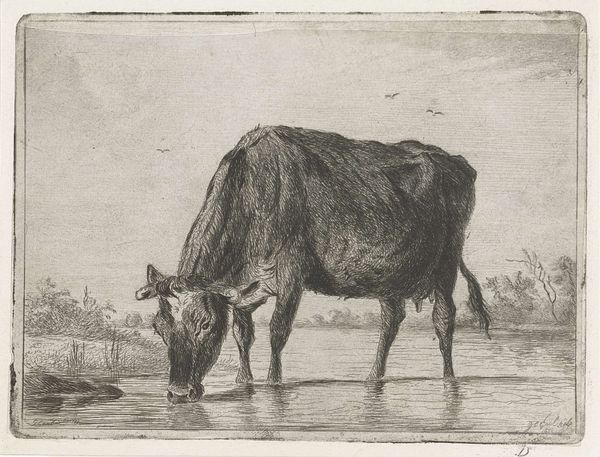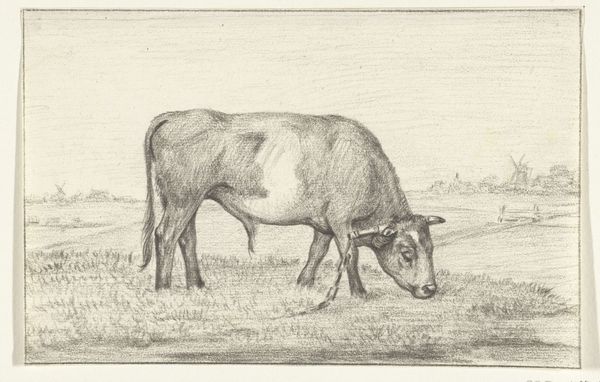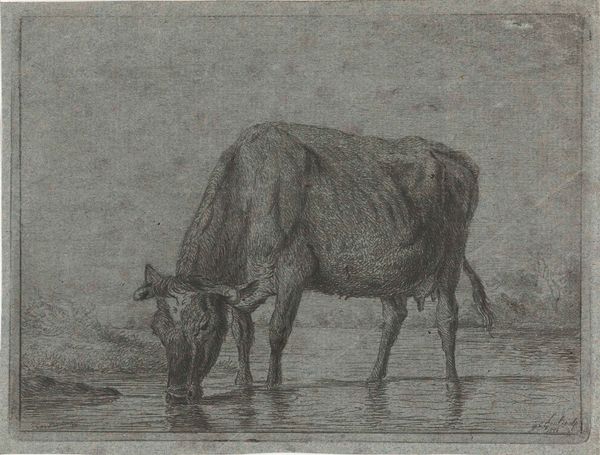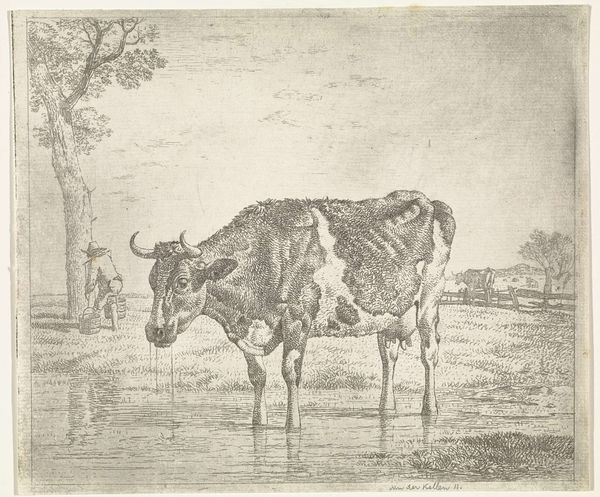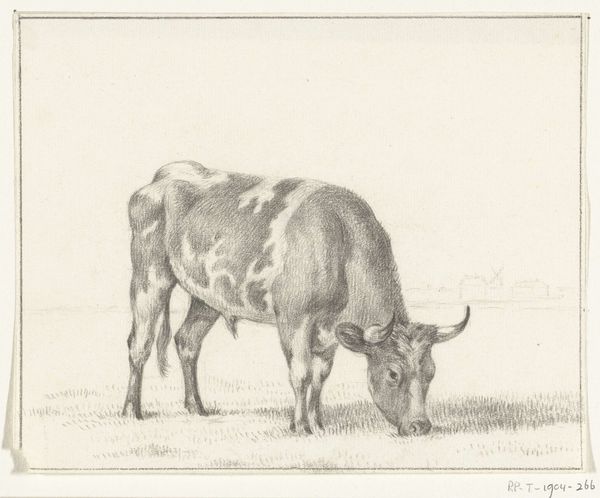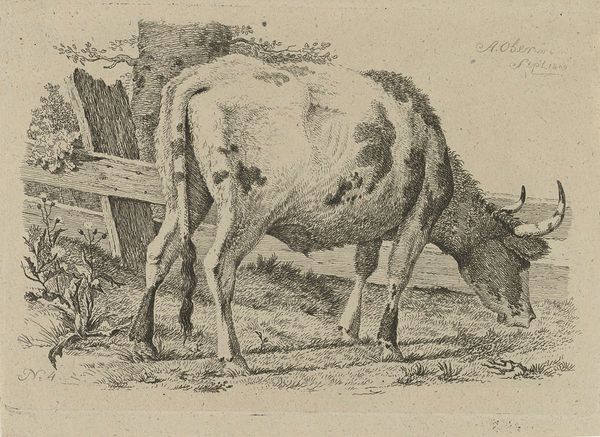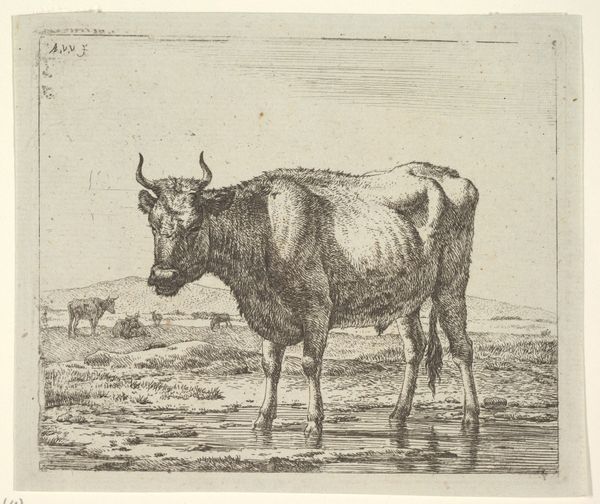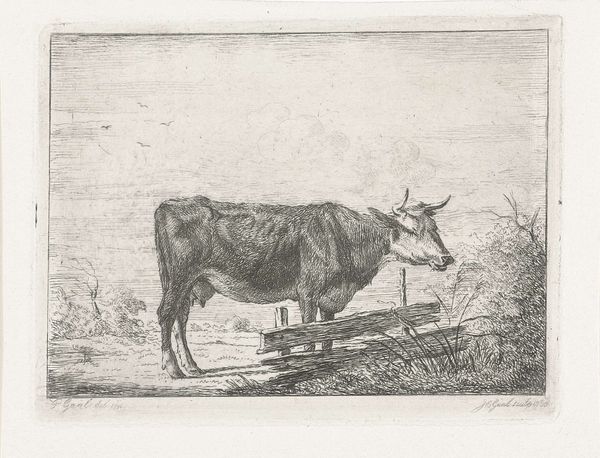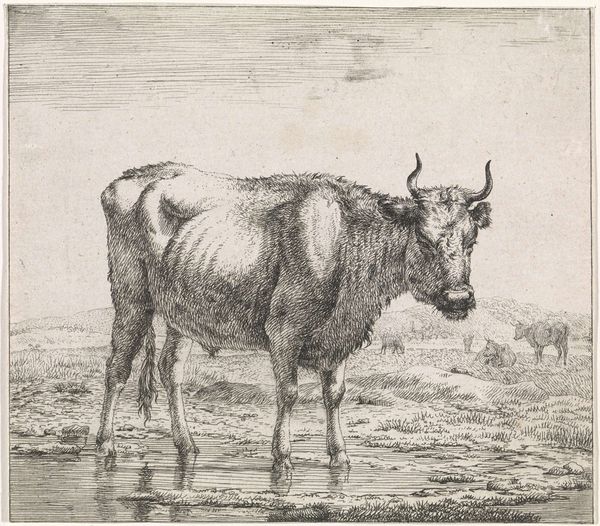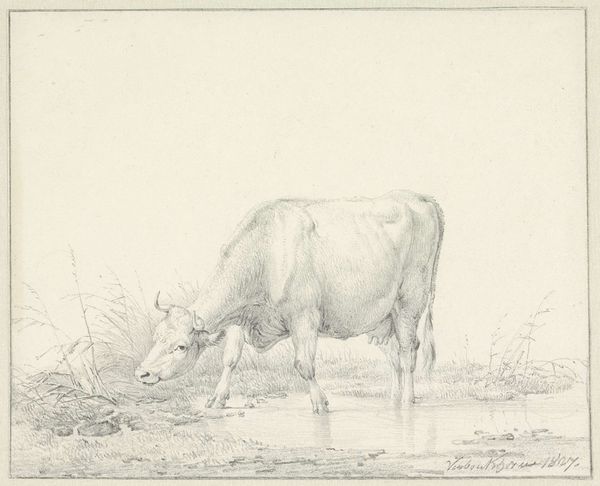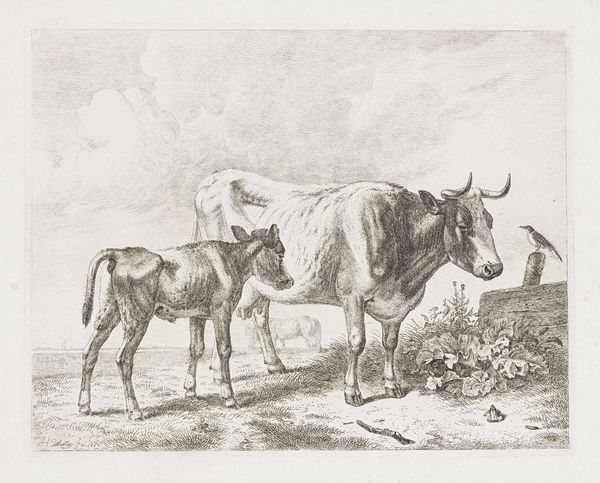
print, etching
#
toned paper
#
dutch-golden-age
# print
#
etching
#
landscape
#
pencil drawing
#
geometric
#
line
#
realism
Dimensions: height 115 mm, width 150 mm
Copyright: Rijks Museum: Open Domain
Jacobus Cornelis Gaal made this etching of a cow drinking in the 19th century. Etching is an indirect intaglio process in which a metal plate is coated with a waxy ground, upon which the artist scratches an image with a needle. The plate is then bathed in acid, which bites into the exposed metal, creating incised lines that hold ink. The resulting print has a distinctive character. Note the intricate network of lines that define the cow's form, and the subtle tonal variations achieved by varying the density and depth of the etched lines. The materiality of the print—the crispness of the lines, the texture of the paper—contributes to its overall aesthetic. While this subject matter might at first seem conventional, the etching process was becoming increasingly industrialized. By exploring the nuances of this print, we gain a deeper appreciation for the artist's technical skill and the broader context of artistic production in the 19th century.
Comments
No comments
Be the first to comment and join the conversation on the ultimate creative platform.
